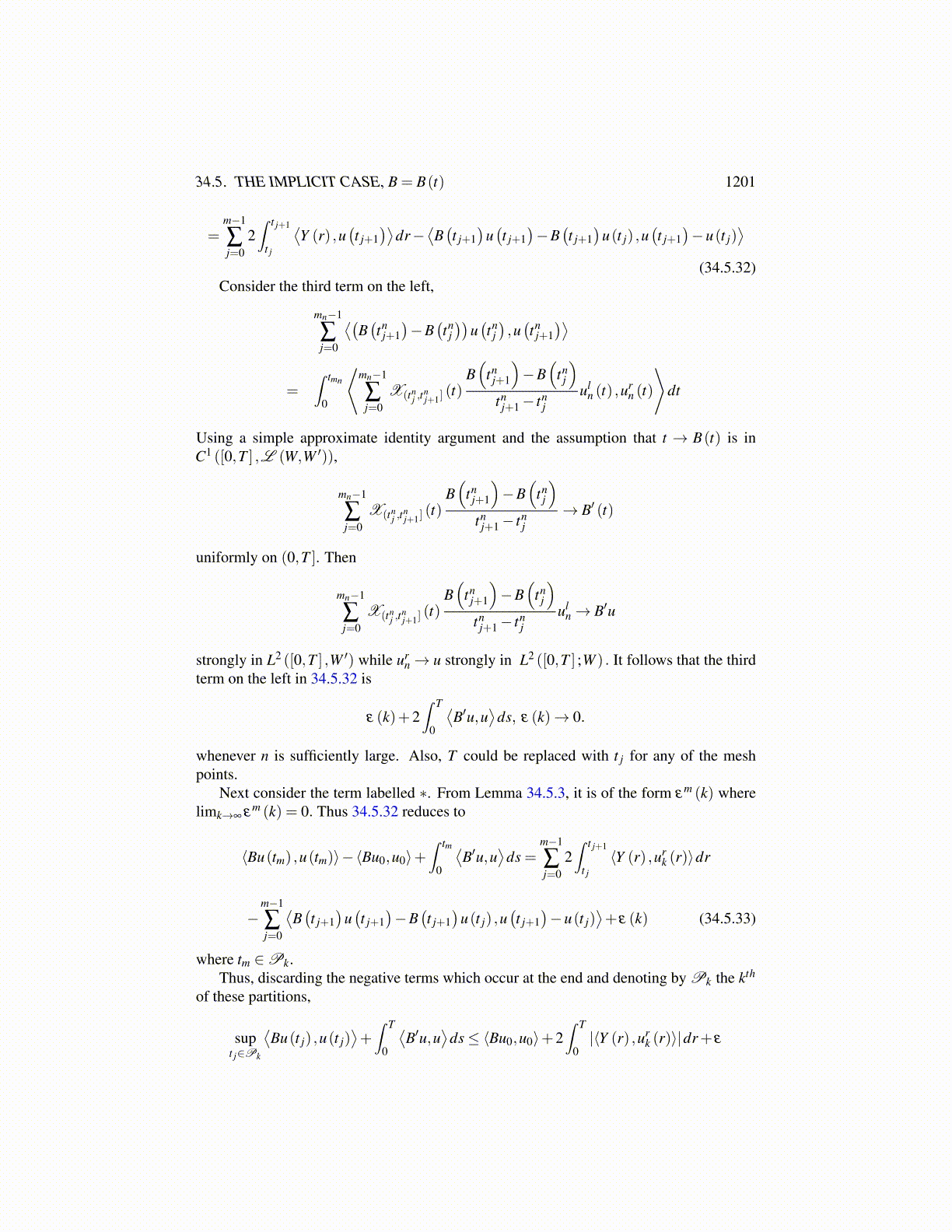
34.5. THE IMPLICIT CASE, B = B(t) 1201
=m−1
∑j=0
2∫ t j+1
t j
⟨Y (r) ,u
(t j+1
)⟩dr−
⟨B(t j+1
)u(t j+1
)−B
(t j+1
)u(t j) ,u
(t j+1
)−u(t j)
⟩(34.5.32)
Consider the third term on the left,
mn−1
∑j=0
⟨(B(tn
j+1)−B
(tn
j))
u(tn
j),u(tn
j+1)⟩
=∫ tmn
0
⟨mn−1
∑j=0
X(tnj ,t
nj+1]
(t)B(
tnj+1
)−B
(tn
j
)tn
j+1− tnj
uln (t) ,u
rn (t)
⟩dt
Using a simple approximate identity argument and the assumption that t → B(t) is inC1 ([0,T ] ,L (W,W ′)),
mn−1
∑j=0
X(tnj ,t
nj+1]
(t)B(
tnj+1
)−B
(tn
j
)tn
j+1− tnj
→ B′ (t)
uniformly on (0,T ]. Then
mn−1
∑j=0
X(tnj ,t
nj+1]
(t)B(
tnj+1
)−B
(tn
j
)tn
j+1− tnj
uln→ B′u
strongly in L2 ([0,T ] ,W ′) while urn→ u strongly in L2 ([0,T ] ;W ) . It follows that the third
term on the left in 34.5.32 is
ε (k)+2∫ T
0
⟨B′u,u
⟩ds, ε (k)→ 0.
whenever n is sufficiently large. Also, T could be replaced with t j for any of the meshpoints.
Next consider the term labelled ∗. From Lemma 34.5.3, it is of the form εm (k) wherelimk→∞ εm (k) = 0. Thus 34.5.32 reduces to
⟨Bu(tm) ,u(tm)⟩−⟨Bu0,u0⟩+∫ tm
0
⟨B′u,u
⟩ds =
m−1
∑j=0
2∫ t j+1
t j
⟨Y (r) ,urk (r)⟩dr
−m−1
∑j=0
⟨B(t j+1
)u(t j+1
)−B
(t j+1
)u(t j) ,u
(t j+1
)−u(t j)
⟩+ ε (k) (34.5.33)
where tm ∈Pk.Thus, discarding the negative terms which occur at the end and denoting by Pk the kth
of these partitions,
supt j∈Pk
⟨Bu(t j) ,u(t j)
⟩+∫ T
0
⟨B′u,u
⟩ds≤ ⟨Bu0,u0⟩+2
∫ T
0|⟨Y (r) ,ur
k (r)⟩|dr+ ε